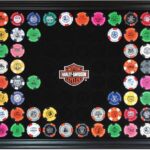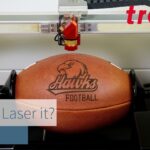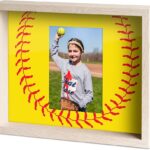I. Introduction to CNC and 3D Printing for Fabricating Hard-to-Find Parts
II. Benefits of Using CNC and 3D Printing for Fabrication
III. Challenges and Considerations when Fabricating Hard-to-Find Parts
IV. Case Studies of Successful Fabrication using CNC and 3D Printing
Have you ever found yourself in need of a specific part for a machine or appliance, only to discover that it’s no longer in production or nearly impossible to find? It’s a frustrating situation that many of us have experienced at one time or another. Luckily, there are innovative solutions available today that can help you fabricate those hard-to-find parts with ease. In this article, we’ll explore the use of CNC (Computer Numerical Control) and 3D printing technologies for fabricating those elusive components.
Imagine being able to recreate a part that is no longer available by simply programming a machine to meticulously carve out the exact shape and dimensions you need. That’s the power of CNC technology. By using computer software to control the movements of cutting tools, CNC machines can produce highly precise parts from a variety of materials, ranging from metals to plastics.
On the other hand, 3D printing offers a whole new level of customization and flexibility when it comes to fabricating parts. Instead of cutting away material like CNC, 3D printing builds up layers of material to create three-dimensional objects. This additive manufacturing process allows for intricate designs and complex geometries that would be difficult or impossible to achieve with traditional manufacturing methods.
Both CNC and 3D printing have revolutionized the way we approach fabrication, especially when it comes to producing hard-to-find parts. Whether you’re a hobbyist tinkering in your garage or a professional in need of a critical component for a machine, these technologies can offer a cost-effective and efficient solution to your fabrication needs.
Benefits of Using CNC and 3D Printing for Fabrication
So you’re in need of a part that seems impossible to find? Don’t worry, because CNC machining and 3D printing are here to save the day! These cutting-edge technologies offer a myriad of benefits when it comes to fabricating hard-to-find parts, making them a go-to solution for many industries.
Precision and Accuracy:
One of the biggest advantages of using CNC machining and 3D printing is the level of precision and accuracy they offer. With CNC machines, you can achieve incredibly tight tolerances, ensuring that your part fits perfectly and functions as intended. 3D printing, on the other hand, allows for complex geometries and intricate designs to be created with ease, making it possible to replicate even the most challenging parts with accuracy.
Cost-Effective Production:
When it comes to fabricating hard-to-find parts, cost is always a concern. Traditional manufacturing methods can be expensive and time-consuming, especially for one-off or low-volume production runs. CNC machining and 3D printing, however, offer a cost-effective solution for producing custom parts. By eliminating the need for expensive tooling and reducing material waste, these technologies can help you save money while still getting the parts you need.
Shorter Lead Times:
Time is of the essence when it comes to fabricating hard-to-find parts, and CNC machining and 3D printing excel in this area. With CNC machining, parts can be produced quickly and efficiently, reducing lead times and getting your project back on track. 3D printing, on the other hand, offers rapid prototyping capabilities, allowing you to test and iterate on designs in a fraction of the time it would take using traditional methods.
Flexibility and Customization:
Every part is unique, and with CNC machining and 3D printing, you have the flexibility to customize and tailor your designs to meet your specific requirements. Whether you need a one-of-a-kind prototype or a batch of custom parts, these technologies offer the freedom to create parts that are perfectly suited to your needs.
So, the next time you find yourself in need of a hard-to-find part, remember the benefits of using CNC machining and 3D printing. With their precision, cost-effective production, shorter lead times, and flexibility, these technologies offer a winning solution for fabricating even the most challenging parts. Don’t let a missing part hold you back – embrace the power of CNC machining and 3D printing to get the parts you need, when you need them.
Challenges and Considerations when Fabricating Hard-to-Find Parts
When it comes to fabricating hard-to-find parts, there are several challenges and considerations that need to be taken into account. Whether you are using CNC machining or 3D printing, it is important to approach the process with careful planning and attention to detail.
1. Understanding the Part Specifications
One of the key challenges when fabricating hard-to-find parts is ensuring that you fully understand the specifications of the part. This includes not only the dimensions and materials required but also any specific tolerances or finishes that need to be met. Taking the time to thoroughly review the part specifications will help to ensure that the final product meets the necessary requirements.
2. Material Selection
Choosing the right material for the fabrication of hard-to-find parts is essential for ensuring the durability and functionality of the part. Consider factors such as strength, heat resistance, and chemical compatibility when selecting a material. It is also important to consider the availability of the material and any special requirements for processing it using CNC machining or 3D printing.
3. Quality Control and Testing
Quality control is crucial when fabricating hard-to-find parts, as any errors or defects can lead to costly delays and rework. It is important to implement thorough testing procedures throughout the fabrication process to ensure that the final product meets the necessary specifications. This may include dimensional inspections, material testing, and functional testing to verify the performance of the part.
4. Lead Times and Production Costs
When fabricating hard-to-find parts, it is important to consider the lead times and production costs involved. CNC machining and 3D printing can offer fast turnaround times for prototyping and production, but it is important to balance speed with cost-effectiveness. Consider factors such as machine availability, material costs, and labor expenses when planning the fabrication process.
5. Communication and Collaboration
Effective communication and collaboration are key when fabricating hard-to-find parts, especially when working with external suppliers or partners. Make sure to clearly communicate the specifications and requirements for the part, and maintain open lines of communication throughout the fabrication process. This will help to ensure that any issues or challenges are addressed in a timely manner, minimizing the risk of delays or errors.
By considering these challenges and factors when fabricating hard-to-find parts using CNC machining or 3D printing, you can improve the success and efficiency of the fabrication process. With careful planning, attention to detail, and effective communication, you can overcome obstacles and achieve high-quality results for even the most complex and elusive parts.
“`html










Comments